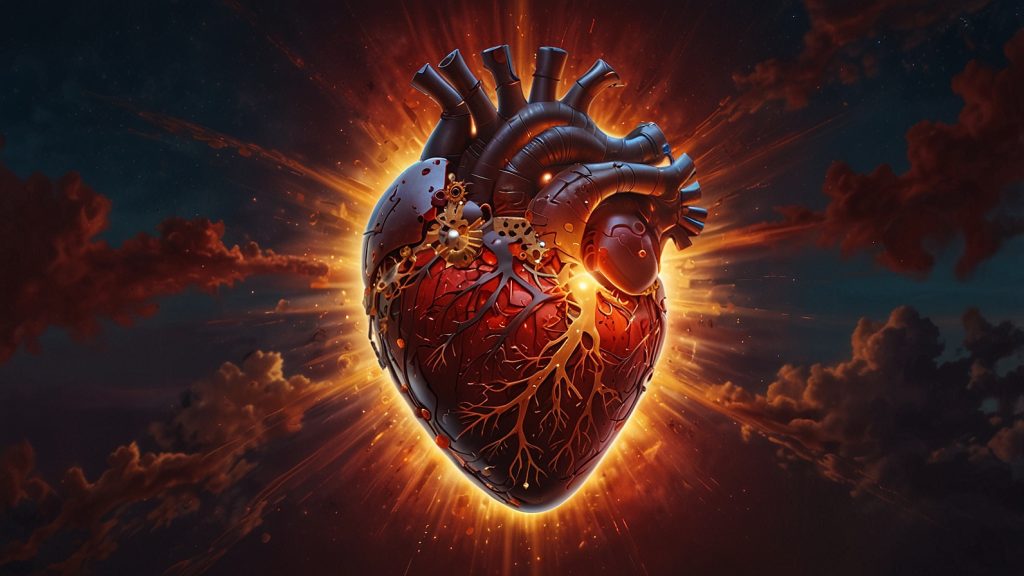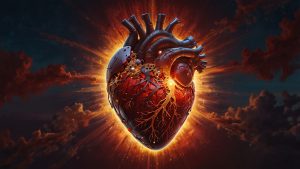The Human Heart: Science, Symbolism, and Survival

The human heart has fascinated scientists, poets, philosophers, and physicians for centuries. It is not only the biological engine of our lives but also one of the most enduring cultural symbols of love, courage, and vitality. The study of the heart straddles multiple disciplines—from anatomy and medicine to psychology, spirituality, and art. In modern times, cardiovascular diseases remain the leading cause of death worldwide, underscoring the urgency of understanding this remarkable organ not just as a symbol, but as a system whose health is vital for survival.
This article explores the heart from multiple perspectives: its structure and function, its role in history and culture, the advances in medical science that have helped prolong heart health, and the lifestyle changes that can protect it. By weaving together scientific detail with human stories, we aim to create a holistic view of the heart as both a pump and a metaphor.
Anatomy and Physiology: The Heart as a Machine
The human heart is a muscular organ about the size of a clenched fist, weighing between 250 and 350 grams. Located slightly left of the midline of the chest, it works ceaselessly from the moment of embryonic development until the end of life. Its central task is deceptively simple: pump blood throughout the body. Yet, in doing so, it supports an intricate balance of oxygen delivery, nutrient transport, waste removal, hormone circulation, and temperature regulation.
The heart is divided into four chambers: two atria on the top and two ventricles at the bottom. The right side of the heart receives deoxygenated blood from the body and pumps it to the lungs for oxygenation. The left side then receives oxygen-rich blood from the lungs and pumps it through the aorta to the rest of the body. Valves between chambers and arteries prevent backflow, ensuring a one-way circulation system.
Each heartbeat is controlled by electrical signals generated by the sinoatrial (SA) node—often called the natural pacemaker of the heart. These signals travel through the atria, the atrioventricular (AV) node, and into the ventricles, synchronizing contraction. The resting adult heart beats 60–100 times per minute, translating into nearly 100,000 beats per day and about 3 billion beats in an average lifetime.
The History of Understanding the Heart
Ancient civilizations often misunderstood the heart. The Egyptians believed it was the seat of the soul and intellect. During mummification, they carefully preserved the heart, considering it essential for the afterlife. Aristotle saw the heart as the seat of emotions and intelligence, a belief that persisted for centuries.
In the 2nd century, the Greek physician Galen described the heart as the center of vital spirits, and his writings dominated medical thought for over a millennium. It was not until the 17th century that William Harvey, an English physician, revolutionized medicine by describing the circulatory system and proving that the heart functioned as a pump circulating blood continuously.
This discovery transformed physiology and medicine. Yet, the cultural and emotional symbolism of the heart—love, bravery, compassion—remained intact. Even today, the heart-shaped symbol used worldwide has little resemblance to the anatomical heart but continues to carry emotional power.
Heart in Culture, Religion, and Symbolism
The heart transcends biology in human imagination. Across cultures, it has symbolized love, morality, courage, and the essence of being. In Christian theology, the Sacred Heart of Jesus symbolizes divine love and sacrifice. In Sufism, the heart represents the seat of spiritual knowledge. In literature, expressions like “heartbroken,” “kindhearted,” or “heart of stone” illustrate the deep metaphorical roots of the organ in language.
The Valentine’s Day heart—stylized, red, and symmetrical—originated in medieval art and became global in the 20th century. Soldiers have long been told to “take heart,” while philosophers speak of “the heart of the matter.” Despite modern science showing that emotions originate in the brain, the heart’s cultural place as the center of feeling endures.
Heart Disease: The Silent Epidemic
Despite its strength, the heart is vulnerable. Cardiovascular diseases (CVDs) are the leading cause of mortality globally, responsible for nearly 18 million deaths per year according to the World Health Organization. Major conditions include coronary artery disease, heart failure, arrhythmias, valvular disease, and congenital defects.
Coronary artery disease, the narrowing or blockage of arteries by plaque, restricts blood supply to the heart muscle and often causes angina or heart attacks. Hypertension (high blood pressure) strains the heart and vessels, while diabetes accelerates vascular damage. Lifestyle factors such as smoking, poor diet, physical inactivity, and stress contribute heavily to cardiovascular riskAlarming trends show that heart disease is no longer limited to older adults. Increasingly, younger populations in developing countries face risks due to urbanization, sedentary habits, and fast-food diets. For women, heart disease is often underdiagnosed because symptoms can differ from men, leading to delayed treatment.
Breakthroughs in Cardiology and Surgery
The 20th century witnessed extraordinary progress in cardiology. Electrocardiograms (ECGs) allowed doctors to study heart rhythms. The invention of defibrillators made it possible to revive patients from cardiac arrest. Open-heart surgery, pioneered in the 1950s, enabled repairs of congenital defects and valve replacements.
One of the most transformative advances was the first successful human heart transplant in 1967 by Dr. Christiaan Barnard in South Africa. Though initially controversial, transplants became lifesaving procedures. Today, artificial hearts, ventricular assist devices, and regenerative medicine using stem cells point to a future where heart failure may be more manageable.
The advent of stents, angioplasty, and bypass surgery revolutionized the treatment of blocked arteries. Meanwhile, medications like statins, beta-blockers, and ACE inhibitors have saved millions of lives. In recent years, wearable technology such as smartwatches with ECG capabilities has empowered individuals to monitor their heart health in real time.
Emotional and Psychological Dimensions of the Heart
While science locates emotions in the brain, the heart still plays a physiological role in emotional experience. Stress, anxiety, and depression can elevate blood pressure, increase heart rate, and worsen cardiovascular risk. Psychocardiology, an emerging field, explores how mental states influence heart health.
The phenomenon of “broken heart syndrome,” or Takotsubo cardiomyopathy, is a striking example. Triggered by extreme emotional stress, it mimics a heart attack, with patients experiencing chest pain and shortness of breath. Fortunately, it is usually reversible. This condition reminds us that mind and body are inseparably linked.
Lifestyle and Prevention: Protecting the Heart
The good news is that many cardiovascular diseases are preventable. Lifestyle changes can dramatically reduce risk:
Diet: A Mediterranean-style diet rich in fruits, vegetables, whole grains, fish, and olive oil supports heart health. Limiting salt, sugar, and processed foods is crucial.
Exercise: Regular aerobic activity strengthens the heart, lowers blood pressure, and improves cholesterol levels. Even brisk walking for 30 minutes a day makes a difference.
No Smoking: Quitting smoking is one of the most powerful ways to protect the heart.
Stress Management: Meditation, yoga, and deep breathing reduce harmful stress hormones.
Regular Check-ups: Monitoring blood pressure, cholesterol, and blood sugar allows early detection of risks.
Public health campaigns and education are essential, especially in countries facing rising rates of heart disease. Communities, workplaces, and schools all have roles in promoting heart-healthy living.
Future of Heart Medicine
Medical research is moving toward precision cardiology, tailoring treatment to individuals’ genetics, environment, and lifestyle. Artificial intelligence is being used to detect early signs of heart disease from imaging and data. 3D printing is helping create custom heart valves and even experimental tissue patches. Researchers are exploring xenotransplantation—using genetically modified pig hearts—as potential solutions to donor shortages.
Gene therapy, stem cell research, and nanotechnology may one day allow damaged heart tissue to regenerate. Meanwhile, wearable and implantable devices will give patients and doctors unprecedented real-time information. These innovations promise not only longer life but also better quality of life for those with heart conditions.
The Heart as a Human Story
Beyond science, every heart tells a story. Consider the transplant patient who lives decades with another person’s heart beating in their chest, a literal continuation of life beyond death. Or the athlete who trains their heart to extraordinary endurance. Or the poet who describes heartbreak in words that resonate universally.
The heart is, at once, an organ, a metaphor, and a symbol. Its beat is the rhythm of life, its failure a profound reminder of mortality. Caring for the heart requires both medical precision and human compassion.
Conclusion: Heart of Humanity
The human heart, in all its complexity, bridges biology and culture, science and spirituality, mechanics and meaning. It sustains our physical survival while embodying our deepest emotions and values. While modern medicine has made enormous strides, the global burden of cardiovascular disease remains high, making prevention, education, and innovation critical.
As we move forward, we must remember that heart health is not only a medical challenge but also a social and cultural responsibility. To “have heart” is to live with resilience, love, and courage. To “take care of the heart” is to safeguard the engine of life itself.
In every sense, the heart remains at the center of what it means to be human.





